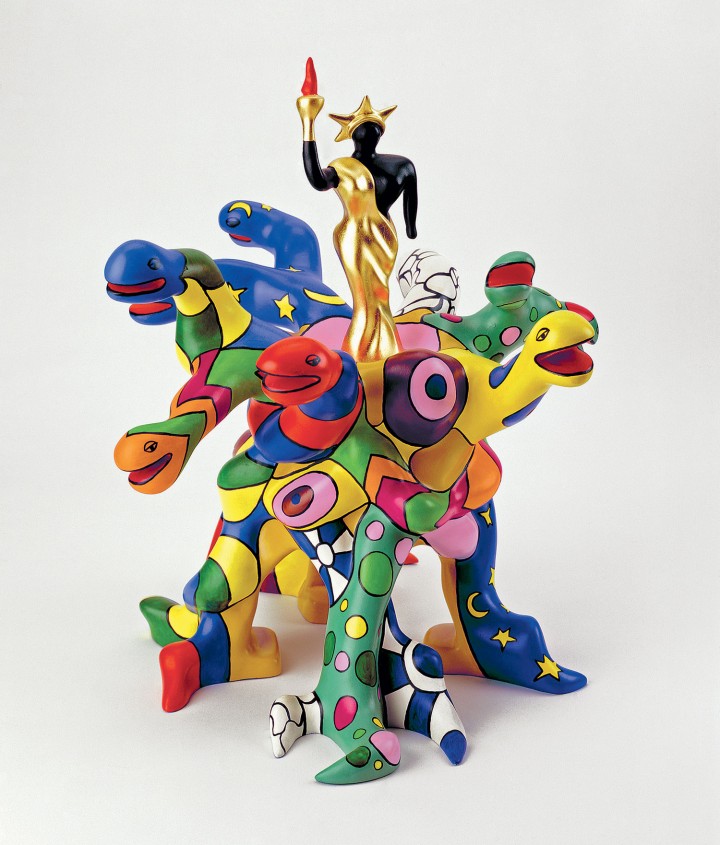“Niki de Saint Phalle” at the Grand Palais in Paris, like many other blockbuster exhibitions, relies on the artist’s name and rich oeuvre while missing a great opportunity to create a poignant and challenging exhibition for those who have long awaited it. For example, a show that includes her marvelous outdoor work could have amended a few misconceptions about art in public spaces — a realm usually dedicated to male artists.
The outdoor sculpture of the self-taught artist was extraordinary for its scale, innovative ideas and use of materials. She is one of the rare female artists of her time to devote so much to fulfilling her grandiose and odd vision for art in public spaces. This continuous enterprise, spanning three decades, should have been more thoroughly acknowledged and researched.
The exhibition starts with her early assemblages that portray imaginary and metaphorical landscapes with black skies. These are followed by murals, reliefs and sculptures from the early 1960s that introduce her concerns with violence and weapons; her large-scale feminine figures representing female roles such as “the bride” (in different variations and scenarios); and her use of birth imagery. It seems that nothing is missing.
Merely seeing her works assembled with some video excerpts from interviews is very exciting, but it should have been enriched by historical information about the socio-political atmosphere in which the artist developed, as well as how the works were conceived and received.
In 1964, when President Johnson signed the Civil Rights Act, she created her Black Nana. Apart from the influence of the feminist writer Simone de Beauvoir, what about her relationship to the anti-colonial struggle? To the feminist movement? What about the mutual influence she and Tinguely had on one another? And her position on the subject of sexual abuse and incest as well as the general subjugation of women’s bodies in our society?


